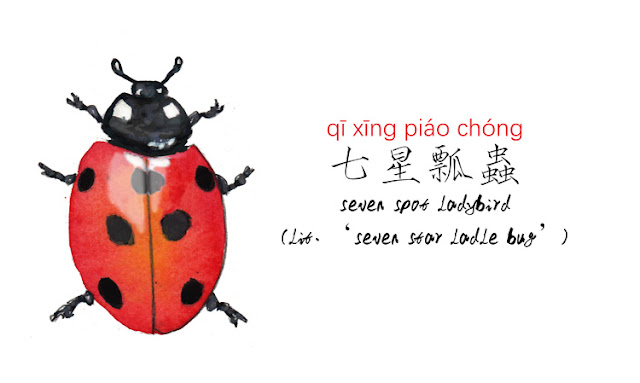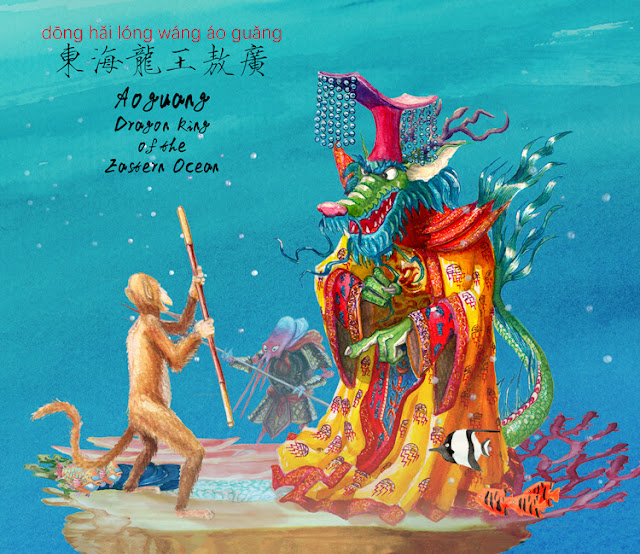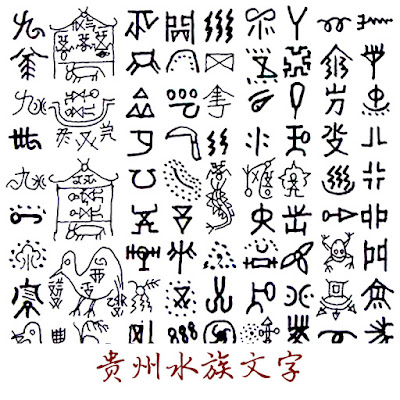Ladybirds and harlequins
Title: Ladybirds and harlequins
|
English names: The seven spot ladybug
(America), the seven spot ladybird (other English speaking countries)*
Chinese name: 七星瓢蟲qī xīng piáo chóng (Lit: ‘seven star ladle bug’, ladle 瓢 because of the shape)
Family: Coccinellidae (瓢蟲科piáo chóng kē, the ladybird family)
Genus: Coccinella (‘scarlet’,瓢蟲屬piáo chóng shǔ)*
Latin name: Coccinella septempunctata (septem
= ‘seven’ and punctus = ‘spot’)
The ladybird eats aphids and other
insects that can damage plants, and so is a favourite with farmers and
gardeners.
|
Living in rural China, many bugs are
surprisingly familiar, like the seven spot ladybird. However they also have
these massive (2-3 times the size) variously patterned monster ladybirds,
called harlequins in English and the boring ‘variegated’ ladybird in Chinese.
|
English names: Harlequin ladybird, Asian
ladybeetle, Halloween ladybeetle (America only)
Chinese name: 異色瓢蟲 (异虫) yì sè piáo chóng
Family: Coccinellidae (瓢蟲科piáo chóng kē, the ladybird family)
Genus: Coccinella (‘scarlet’,瓢虫屬piáo chóng shǔ)*
Latin name: Harmonia axyridis
It has one of the most varied appearances
of any species in the world, appearing in all kinds of colour and pattern
combinations. And apart from the colours, the other way to tell it apart from
the regular seven spot ladybird is that the harlequin is at least twice the
size.
Native to Asia, it’s an invasive species
in Europe and North America, having a terrible effect on other ladybird
species, not least because it eats their eggs and larva.
|
I later found out harlequin ladybirds are
now common in the UK, having been introduced 15 odd years ago, but that was
after I left.
The harlequin is named for the
chequered-costumed jester of late Medieval Italy.
Both species of ladybird protect themselves
by playing dead, and can secrete a foul liquid from their legs which makes them
taste unappealing, you may see this if they get stressed out when you handle
them. Or try to eat them.
* Entomologists prefer the name lady
beetles as though they’re insects they are not ‘true bugs’. A true bug is one
that belongs to the Hemiptera order of insects, all of whom share similar
‘sucking mouthparts’: This includes aphids, cicadas, bed bugs, and shield bugs,
so really not that many families.





Comments
Post a Comment